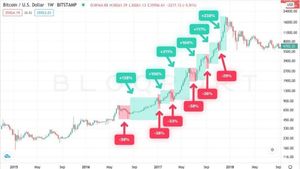Stellantis, the multinational automotive giant formed from the merger of Fiat Chrysler and PSA Group, is at a crossroads as it seeks to redefine its leadership and brand strategy. Following the departure of CEO Carlos Tavares at the end of December 2024, John Elkann has stepped up to lead the company until a successor is appointed, which he aims to finalize by the end of June 2025. The process is not only about filling the vacancy but also about ensuring the new CEO aligns with the company's future brand direction and faces the changing automotive market.
Elkann, who is also chairman of Stellantis, has emphasized the importance of finding the right leader who understands the company's diverse brand portfolio. "If the CEO was ready, we would have announced him already," he stated, reflecting the deliberative approach the board is taking in this pivotal moment. With 14 brands under its umbrella, including Jeep, Ram, Peugeot, and struggling names like DS and Lancia, Elkann faces significant pressure to evaluate which brands have viable futures and how to streamline operations without alienifying loyal customers.
The discussion surrounding Stellantis’ brand strategy is underscored by the stark reality of the automotive industry’s competitive environment, which many experts liken to a "Darwinian era" where only the fittest will survive. Previous CEO Tavares had insisted all Stellantis brands had potential, but with shrinking sales, particularly in the U.S. market—traditionally the company’s strongest market—it’s clear tough decisions are on the horizon. Elkann is tasked with rejuvenation, as dwindling consumer recognition of the Stellantis brand itself, coupled with underperforming divisions, prompt reevaluation of their strategies quickly.
“The new CEO must be ready to take strong decisions,” said Fabio Caldato of Acomea SGR, which holds shares in Stellantis, highlighting the expectation for significant shifts under new leadership. Analysts suggest premium brands such as Alfa Romeo, DS, and Lancia may be vulnerable to reassessments, particularly as Stellantis gears up to tackle electrification mandates and increased competition from traditional and new EV manufacturers.
With sales data reflecting challenges, Stellantis’ Jeep brand accounted for about 15% of global sales, with Chrysler and Dodge trailing at around 3% each, there’s concern about how the deep-rooted identities of these brands will fit alongside newer electric offerings. Market changes and consumer trends necessitate adaptability, and the ability to effectively communicate each brand's unique value becomes imperative for Stellantis
Taking the shift toward electric vehicles seriously, Stellantis aims to launch around 20 new or updated vehicle models by the end of 2025, primarily focused on hybrids and EVs like the Citroen C3, which is set to be the most affordable European-made electric vehicle. The company faces growing pressure not only to produce electrified vehicles but to maintain brand individuality amid the push for sustainability.
On February 24, 2025, during the Milan Fashion Week, Stellantis solidified its commitment to innovative branding by delivering the first two Fiat 500e Giorgio Armani Collector's Editions to fashion icon Giorgio Armani himself. This strategic partnership highlights Stellantis's intention to blend luxury with sustainability, with Olivier Francois, CEO of Fiat, stating: “Today, by delivering these two limited-edition models to Giorgio Armani, we seal this prestigious collaboration.” This collaboration exemplifies how Stellantis is attempting to redefine what luxury means within the automotive market through partnerships.
The move to electrify the iconic Fiat 500 model signifies more than just releasing another electric car; it's about positioning Stellantis as a forward-thinking leader with strong ties to cultural crossover ventures like fashion. The handover event emphasizes the alignment of Stellantis’s brands with consumer desires for stylish, sustainable options, demonstrating growth potential beyond traditional automotive markets. The ambition here is to not only entrench the company's name among consumers but also construct brand identities rooted in contemporary cultural aesthetics.
Stellantis finds itself balancing innovation with tradition. The company possesses numerous successful brands, each with its own legacy, yet finds itself needing to pivot strategically amid constraints imposed by environmental regulations and changing market expectations.
"Stellantis is focused on providing even more choices to its customers, leveraging the deep history and strong identities of its 14 brands," the company stated, underscoring its commitment to revitalizing each brand’s identity through new models and products. The challenge remains significant, as Elkann’s successor will not only need to mitigate risks from merging brands but also embrace the vision of pushing boundaries on what the automotive experience can entail within the future automotive ecosystem.
While the tides of change likely lay on the horizon for Stellantis, from leadership transitions to constant scrutiny of brand viability, the true test will come not only from how fast they adapt but also ensuring their rich history is respectfully integrated with future ambitions. With industry-wide shifts due to electric evolution, consumers will watch closely to see how familiar names will reemerge with unmistakable relevance.



